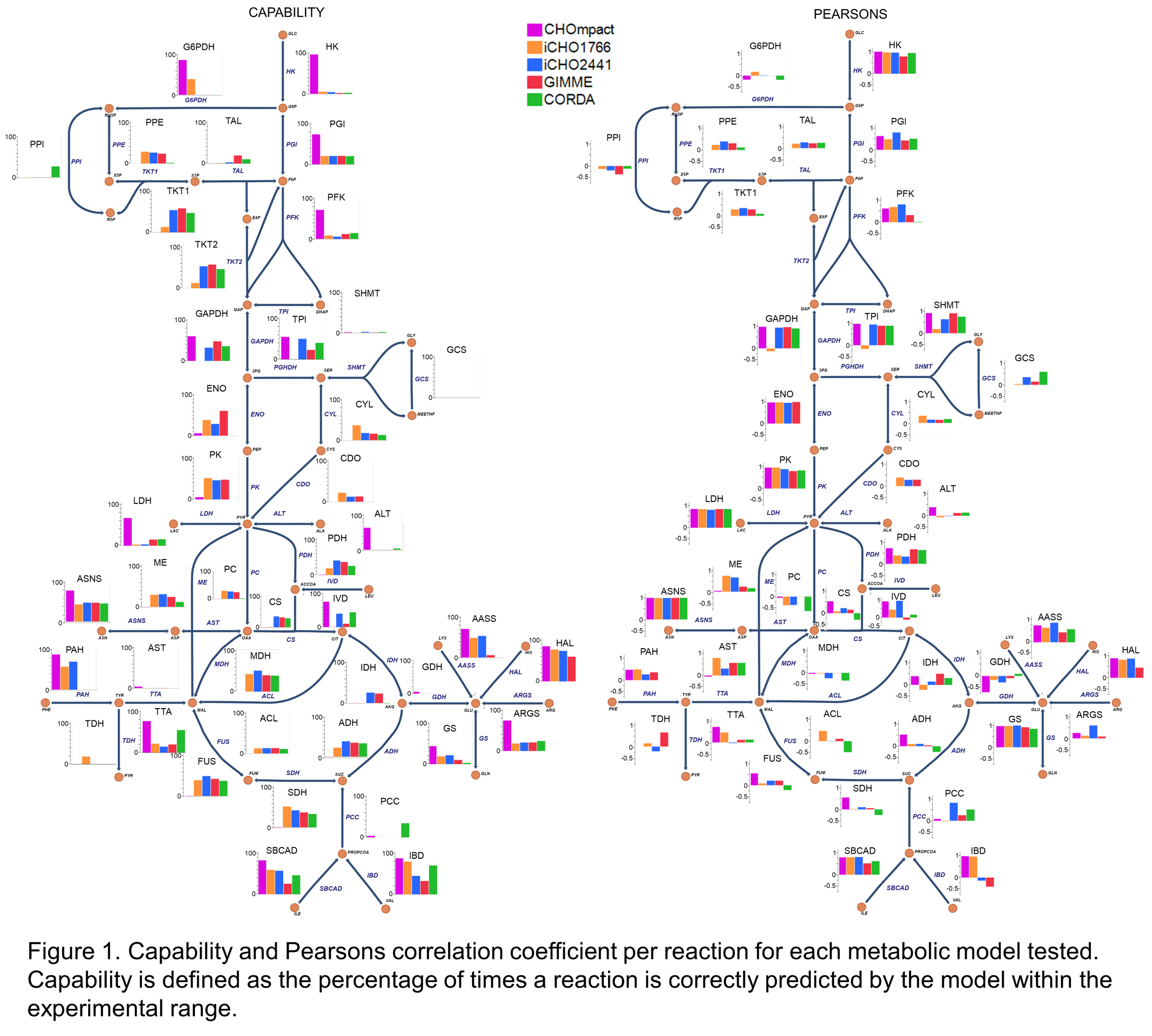(120a) Are Genome Scale Metabolic Models (GeMs) Fit for Purpose? A Comprehensive Analysis into the Reliability of Chinese Hamster Ovary (CHO) Cell GeMs.
AIChE Annual Meeting
2022
2022 Annual Meeting
Food, Pharmaceutical & Bioengineering Division
Computational and systems biology tools for metabolic engineering and cell characterization
Monday, November 14, 2022 - 12:30pm to 12:48pm
Background
Chinese hamster ovary (CHO) cells are the leading platform for the production of many therapeutic recombinant proteins, meaning increasing the efficiency and yield of these cell lines is of critical importance to meet demands and reduce costs. CHO cell genome scale metabolic models (GeMs) possess the power to revolutionise cell line efficiency and yield by their ability to predict and understand whole cell metabolism in silico, allowing for model directed metabolic and process engineering strategies to be implemented. Despite this, the effectiveness of CHO cell GeMs at capturing both intracellular flux distributions and extracellular phenotypes has yet to be comprehensively assessed.
Methods
In this work we present an evaluation of the extracellular and intracellular predictive power of CHO cell GeMs using a novel holistic assessment strategy. Firstly, we synthesise current state-of-the-art models to generate the most comprehensive CHO cell GeM to date, iCHO2441. From this model, we generate industrially relevant CHO-K1 and CHO-S cell line specific models via ‘omics integration. We constrain the GeMs with 31 published metabolomic datasets and employ flux balance analysis (FBA) and flux sampling methodologies to compare these new models against the original CHO GeM, iCHO1766, as well as a small-scale CHO metabolic model, CHOmpact. Model predictions are assessed via comparison with experimentally measured growth rates, gene essentialities, amino acid auxotrophies, and 13C intracellular reaction rates.
Results
We demonstrate all CHO cell models are able to capture extracellular phenotypes, highlighting that cell line specific models show significant improvements in gene essentiality and amino acid auxotrophy predictions compared to other models tested. Secondly, we demonstrate that CHO GeMs are adept at predicting intracellular flux states across varying cell culture conditions, showing GeMs can predict qualitatively and quantitatively for many intracellular reactions using only simple metabolomic datasets to constrain models. Our in-depth interrogation identifies alternate pathways and infinite loops as key causes of poor predictive performance. We show that our updated GeM outperforms the original CHO GeM and highlight instances where the use of cell line specific and small-scale models is beneficial.
Summary
Overall, we have introduced an updated CHO GeM to the community and have employed the most intensive CHO cell model assessment to-date. Our results provide assurance that CHO GeMs can be used as an effective toolbox for interrogating cellular metabolism in many industrial settings. Ultimately, this work lays a foundation for the development and assessment of next-generation flux analysis techniques, highlighting areas for model improvements and providing recommendations for when different CHO cell metabolic models are best employed. 
